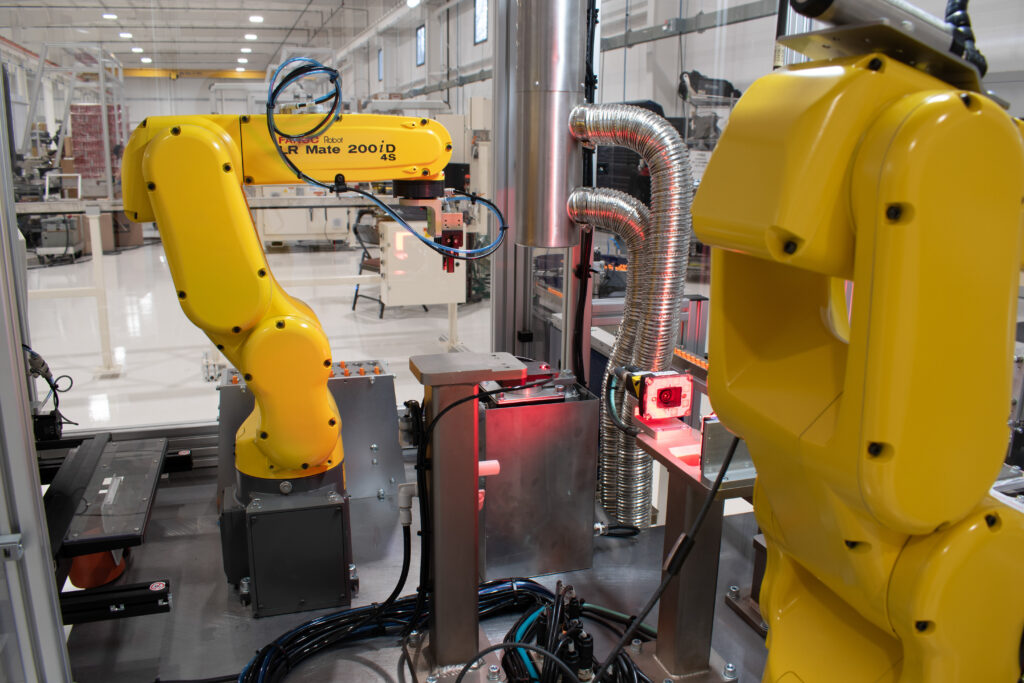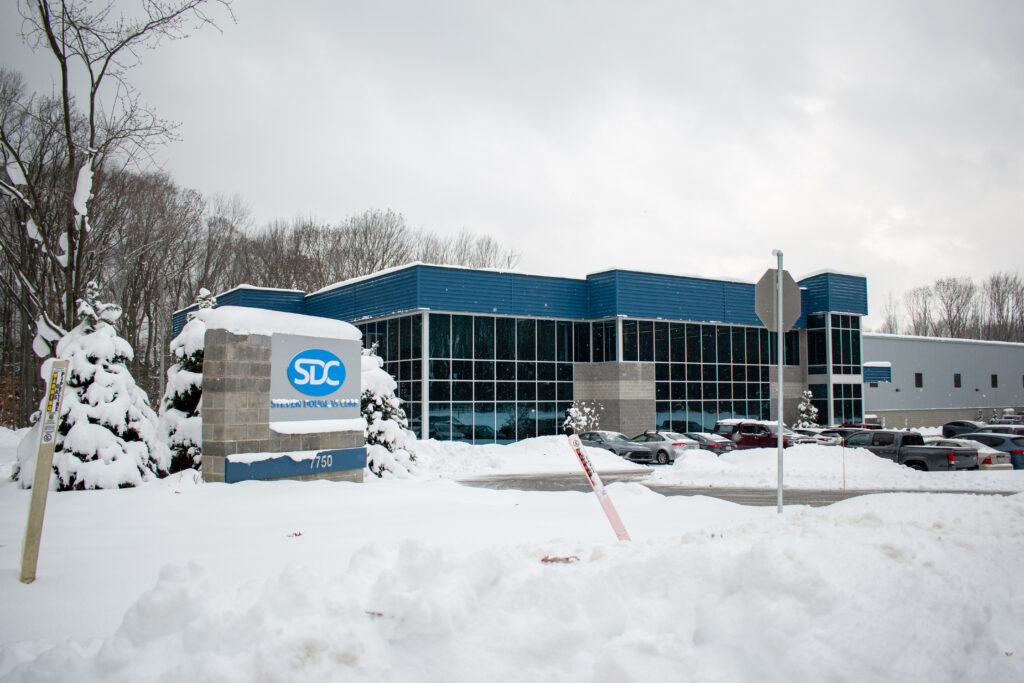Automation technology has dramatically advanced over the past few decades. According to the Robotic Industries Association, “Robots have become faster, more accurate and more capable of automating a wider range of tasks. Vision technology has become cheaper, faster and more intelligent over the years too.” When combined, it should come as no surprise, then, that these two automation technologies have proven beneficial to manufacturers in virtually every industry.
In some of today’s sophisticated automated machinery, vision-guided robotic motion is allowing robotic machines to do more complex tasks than ever before. Below, we briefly explain vision-guided robotics and some of its primary capabilities and benefits.
What is Vision-Guided Robotics?
The basic concept of a vision-guided robotics (machine vision) system is straightforward: a camera takes a picture of an object and analyzes the image to send precise coordinates to a robotic arm so it can make a move to the desired position. Within this system, there are two main components: an industrial robotic arm and an industrial vision system.
Industrial Robotic Arm

Industrial robotic arms provide programmable motion to pick-and-place a part at the desired location. The arms’ capabilities are robust and can easily be customized, which include but are not limited to:
- Robotic arms are available in many styles, sizes, and capabilities, providing simple linear motions to complex seven axis motions.
- Robotic controllers allow moves to be made using real dimensions. For example, “move 20.00 mm in X direction.”
- Robotic arms can be commanded to follow a path and/or move with a specified velocity
- Robotic software can be written to allow different robotic motions based on programmed logic (also known as ladder logic)
Industrial Vision Systems
Industrial vision systems are comprised of a camera that can be integrated with machine vision and image processing software. Both the camera and the software can be customized to quickly and easily recognize parts by taking a picture and analyzing the image.
Cameras are available with many different resolutions, image processing speeds, and colors (including black and white). The engineers at Steven Douglas Corp. (SDC) are experts in selecting the best lighting and type of camera lens to generate an image that best depicts the part to analyze. For example, rather than shine a light facing down on a part, our engineers changed the angle to back light the part for an application where the camera needed to see the silhouette of the part. In this way, the outer shape of the part could clearly be identified with no shadows. In another recent example, SDC was tasked with inspecting for black grease on a part that was black in color, which made detecting the grease on the part, challenging. SDC’s solution involved leveraging the unique spectrum of an ultraviolet light to allow the grease to glow, so the camera system could easily verify and inspect the amount and location of grease on the part.
Along with the camera, the industrial vision system can be very advanced depending on your application and can range from 2-D to 3-D, and even the emerging 3-D bin picking technology, which is designed to quickly and easily recognize and pick parts that are randomly presented in a bin. Depending on your application, these vision systems can be programmed to:
- Calibrate the whole image into (X, Y) coordinates in real dimensions.
- Look for a specific shape in a picture.
- Measure image features by converting pixels to real dimensions. For example, “determine the diameter of a round feature in millimeters.”
Benefits of Vision-Guided Robotics
The concept of vision-guided robotics opens up the possibility to perform much more precise and complicated work. Benefits of leveraging vision-guided robotics in an automated machine include:
- High speed. In a fraction of a second, these systems can take a picture, analyze the image, and send the coordinates to the robot.
- Improved accuracy. Machine vision technology allows the robotic arm to make moves based on what it sees, instead of to a predetermined position, for more accurate placement.
- Greater efficiency. While the robot is placing a part, the camera can simultaneously take a picture of the next part so that the system is continuously in motion.
- Reduced costs. Vision-guided robotics have the ability to handle parts without needing to invest in hard tooling or fixturing to locate the part.
Practical Applications
Vision-guided robotics commonly integrate with automated assembly machines and material handling systems. At SDC, we have used vision-guided robotic systems to assemble microscopic components to micron-level precision as well as larger parts that are several meters in size. Throughout our 20+ years of experience, we have successfully implemented machine vision technology on many projects, some of which involve:
- Picking parts from bins, pallets, and on moving conveyors.
- Assembling parts together by placing one part inside the other in tight fitting holes and shapes.
- Dispensing fluids in precise locations.
- Automatically adjusting the position of parts in assemblies.
- Manipulating components using logic derived from vision.
Experts in Vision-Guided Robotics
The engineers at SDC are experts in vision guided robotics who have extensive experience utilizing some of the best vision-guided robotic systems available, including Fanuc, Epson, Mitsubishi, and ABB. As the largest and most capable engineering company in Northeast Ohio, we can design and build a vision-guided robotics system that best meets your needs and applications.
Contact SDC today if you have an automation project that may be a candidate for vision-guided robotic technology. In the meantime, check out some of our past projects.

